|
How to Tell If an
Antique is a Fake
by Bob Brooke
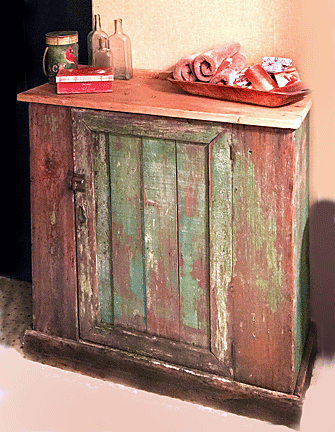 Collecting
antiques, especially those made before the 1830s, can be an expensive
proposition. And while dealers in high-end antiques are mostly honest,
there have been some who have played a few tricks on their customers. Collecting
antiques, especially those made before the 1830s, can be an expensive
proposition. And while dealers in high-end antiques are mostly honest,
there have been some who have played a few tricks on their customers.
One trick is to replace parts of furniture with pieces from other
antique pieces. The rule states that as long as 60 percent of a piece is
original, then it can be sold as an antique. However, there are some
dealers that “make” antiques. This is far easier to do with pieces of
furniture than with ceramics, glass, or silver.
There are two types of “made” antiques. The first is what’s called a
“marriage.” This is result of two pieces being joined together. A good
example is a low chest combined with a cabinet set on top of it.
Primitive pieces are particularly susceptible to marriages.
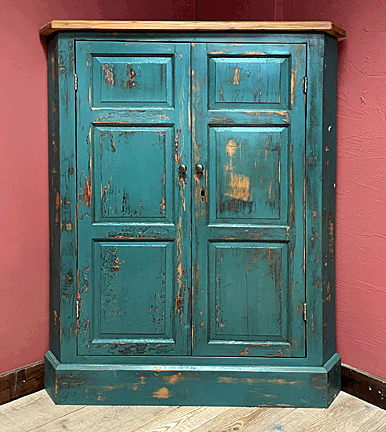 The
second is an antique piece of furniture literally made of pieces from
other pieces of older furniture. To the novice collector’s eye, this
piece may look authentic. Also, pieces like this have no provenance. The
second is an antique piece of furniture literally made of pieces from
other pieces of older furniture. To the novice collector’s eye, this
piece may look authentic. Also, pieces like this have no provenance.
Primitive pieces are
particularly susceptible to marriages. Take this corner cabinet for
example. By taking two old doors and old wood from other furniture, then
painting it, and finally distressing the painted surface, a “new”
antique marriage is born.
Fakers also use old barnwood and literally build primitive cabinets,
tables, and such to create “new” primitive antiques.
And in a stroke of genius, someone took pieces of a Spanish galleon and
created a large ornate table that looks as if always existed. It
recently sold for $400,000!
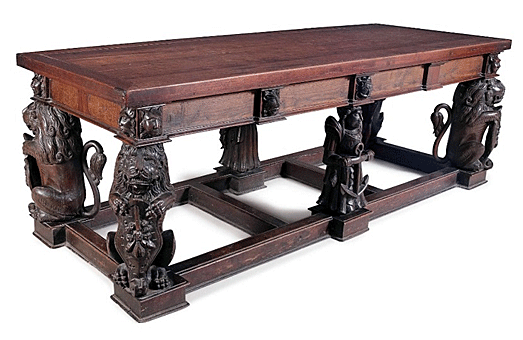
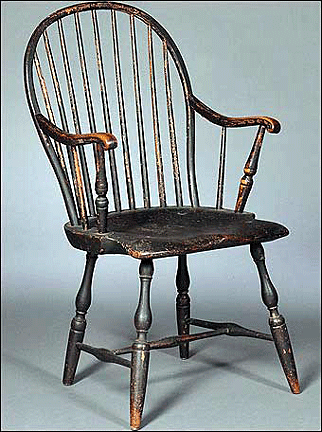 Mark
Soukup of Gap Mills, West Virginia, makes reproduction Windsor chairs by
hand in the same way chairmakers did back in the 18th Century. The only
difference is that his chairs look new. They’re not aged but are made to
be used in today’s homes and offices. But there are other chairmakers
out there who use the same age-old techniques to create fake Windsor
chairs that are then sold by unsuspecting dealers as real thing. Mark
Soukup of Gap Mills, West Virginia, makes reproduction Windsor chairs by
hand in the same way chairmakers did back in the 18th Century. The only
difference is that his chairs look new. They’re not aged but are made to
be used in today’s homes and offices. But there are other chairmakers
out there who use the same age-old techniques to create fake Windsor
chairs that are then sold by unsuspecting dealers as real thing.
A variety of other pieces of fake antique furniture—made to be sold as
authentic—have been coming out of China and Indonesia for the last
several decades. In some cases, only true antiques experts can tell the
difference, but on closer inspection many other pieces show shoddy
workmanship and a lack of details.
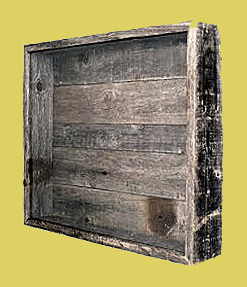 The
best defense against fake antiques is knowledge, especially if a
collector is spending big bucks to purchase pieces. Books, magazines,
and price guides are a great place to begin. There are also Web sites,
such as #TheAntiquesAlmanac, that offer supplemental information. It’s
important to learn as much as possible about style periods and
variations, as well as craftsmanship and original materials. The
best defense against fake antiques is knowledge, especially if a
collector is spending big bucks to purchase pieces. Books, magazines,
and price guides are a great place to begin. There are also Web sites,
such as #TheAntiquesAlmanac, that offer supplemental information. It’s
important to learn as much as possible about style periods and
variations, as well as craftsmanship and original materials.
But nothing beats visiting museums, antique shows and shops, and even
flea markets. Once a collector becomes familiar with authentic pieces,
fakes will stand out, regardless of what a dealer may say about them.
Collectors clubs are another way of gaining knowledge and tips from
other collectors.
Learn to Study a Piece
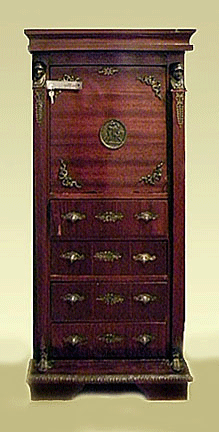 It’s
important to thoroughly study a piece. Impulse buying can lead to costly
mistakes. For example, examine furniture to determine if the
manufacturing methods are consistent with the piece's alleged age. Ask
yourself, what type of wood was the piece made from? Are there signs of
shrinkage? Does the piece show signs of authentic wear or age? Is there
evidence of modern tools or construction methods? Has the item been
glorified, altered or converted from something else? Does the interior
smell old? Are there signs of repair or refinishing? If the item passes
these preliminary tests, consider the purchase. It’s
important to thoroughly study a piece. Impulse buying can lead to costly
mistakes. For example, examine furniture to determine if the
manufacturing methods are consistent with the piece's alleged age. Ask
yourself, what type of wood was the piece made from? Are there signs of
shrinkage? Does the piece show signs of authentic wear or age? Is there
evidence of modern tools or construction methods? Has the item been
glorified, altered or converted from something else? Does the interior
smell old? Are there signs of repair or refinishing? If the item passes
these preliminary tests, consider the purchase.
A few signs that
furniture is newer include consistent color, lack of patina, machine-cut
moldings/carvings, and modern screws or nails. Things like mortise-and-tenon
joints, wood pegs, hand-cut dovetails, and rose head nails are typically
found in antique furniture.
If the price is too good to be true, it usually is. Collectors often
discover what seems like a masterpiece in an antique shop at a
remarkably low price. The dealer may have had the piece for a long time
and lowered the price to sell it. Holding on to pieces usually costs
more than the profit they may bring. Also, the dealer may specialize in
one type of antique and the piece is not of that type. In that case, the
dealer would want to unload it as soon as possible. And because the
dealer probably wasn’t knowledgeable about this antique, a fake could
easily pass as authentic.
Some collectors get to know a local dealer or two specializing in their
category of antiques. This way they can take advantage of the dealer’s
accumulated knowledge and expertise.
Most antique dealers are ethical and professional and won’t knowingly
sell fakes. And if it turns out that a piece is questionable after being
seen by another dealer specializing in that category of antiques, the
dealer who originally sold the piece will usually take it back.
Dealers selling high-end antiques always provide the buyer with written
documentation detailing its age, as well as a receipt of sale. The
receipt is important should legal action needs to be taken.
<
Back to Antiques Extra! Archives
Next Editorial >
|
